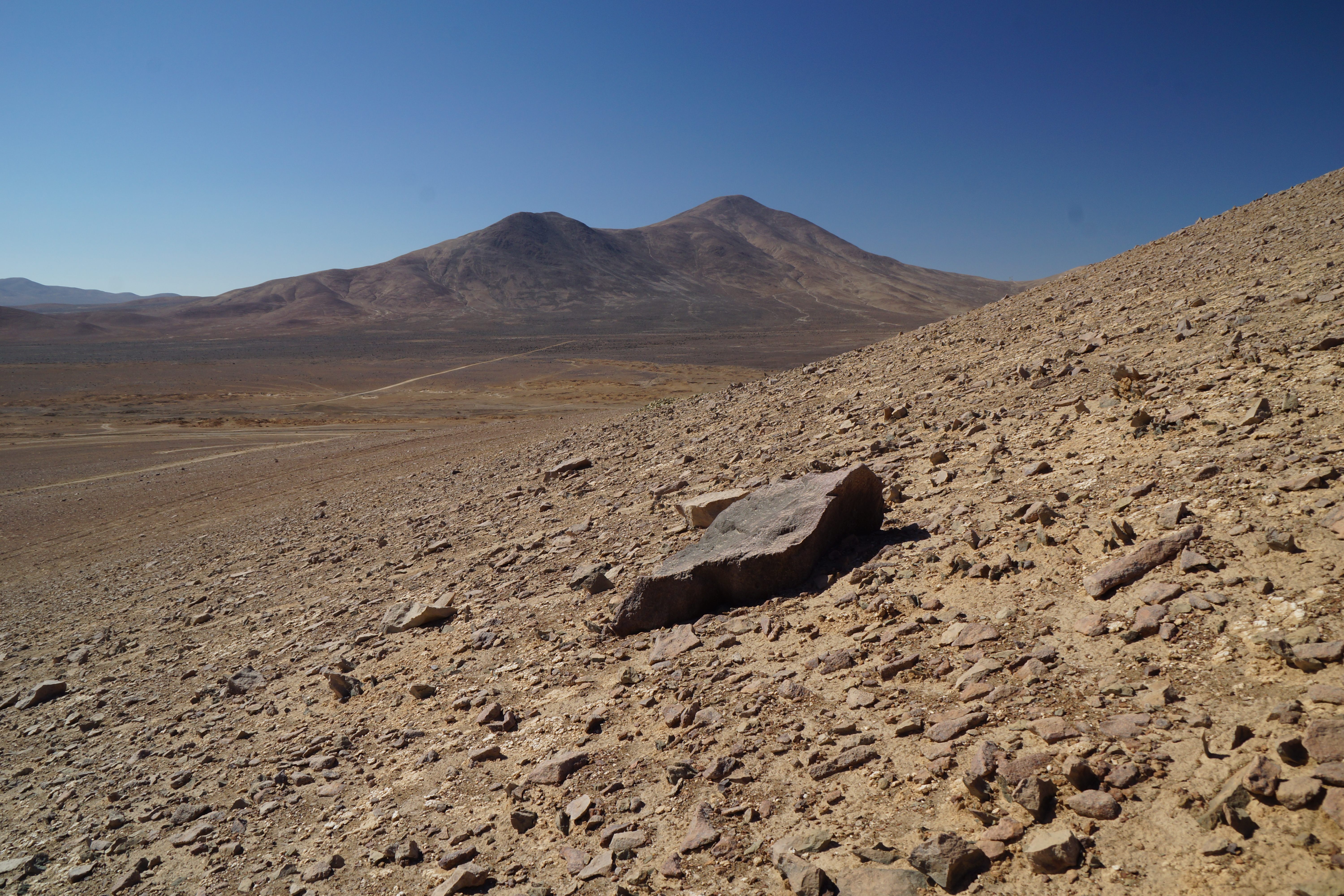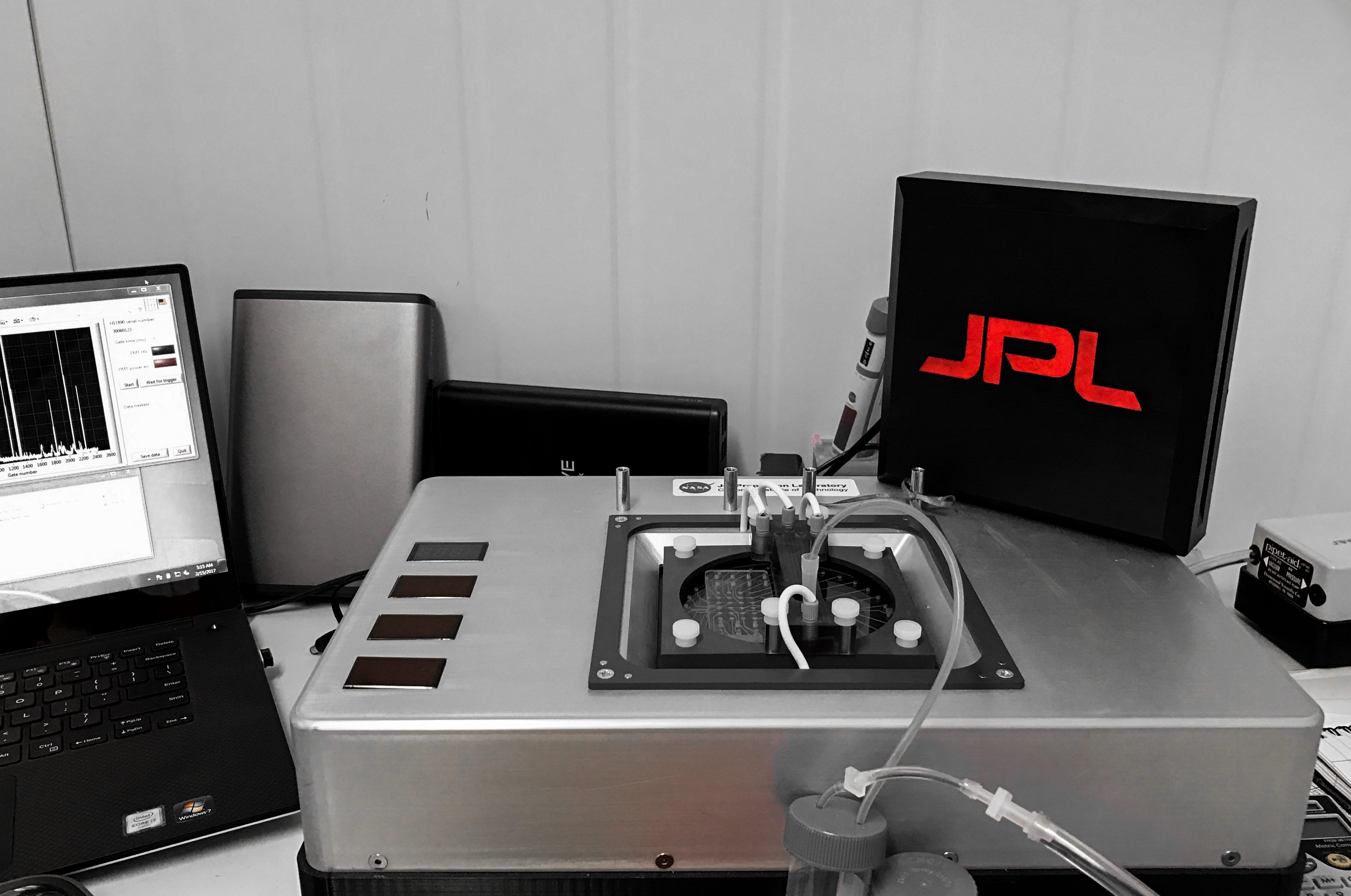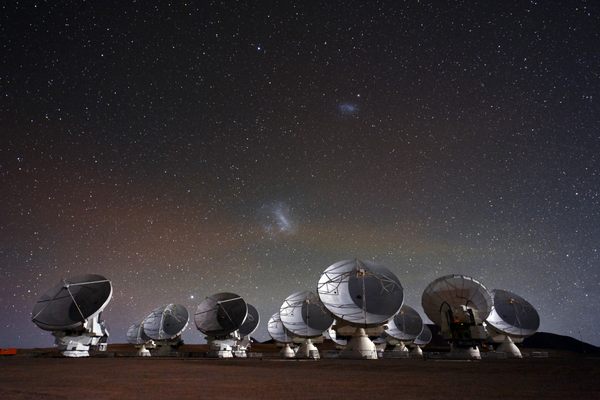Practicing Looking for Life on Mars in Chile’s Atacama Desert
A test run on Earth is a whole lot cheaper.

A team of scientists from NASA’s Jet Propulsion Laboratory has been in Chile’s Atacama Desert to test a new computer—in part because the region is so arid and lifeless that it makes an able stand-in for Mars. Sending robotic probes to our planetary neighbor is expensive and time-consuming, so it’s important to get the technology they send up there just right. There’s a few places on Earth extreme enough for this work, and the Atacama is one of them.
The new computer, dubbed the Chemical Laptop, tests for the presence of 17 specific amino acids, the building blocks of proteins and, in turn, life. Samples from the Atacama Desert are bone dry—as the Martian samples will be—so the device mixes collected soil and dust with water, and then heats it up to a whopping 392 degrees Fahrenheit. The amino acids dissolve in the water, where a fluorescent dye then attaches to them, and the Chemical Laptop can measure how much of each amino acid is present with a laser.

The Atacama Desert is the perfect venue for these tests. It is one of the driest nonpolar regions, and harbors some of the hardiest microbes on the planet. It’s these microbes that give scientists hope that they’ll find life on the inhospitable Martian surface. More tests are planned for the new device, in the Atacama and in Antarctica. Scientists are trying to bring the entire process together in one compact package that a rover can use on Mars, or even on an icy moon such as Enceladus or Europa. “The idea is to automate and miniaturize all the steps you would do manually in a chemistry lab on Earth,” said Fernanda Mora, the Chemical Laptop’s lead scientist, in a release. “That way, we can do the same analyses on another world simply by sending commands with a computer.”
Until then, practice on Earth makes perfect.



















Follow us on Twitter to get the latest on the world's hidden wonders.
Like us on Facebook to get the latest on the world's hidden wonders.
Follow us on Twitter Like us on Facebook